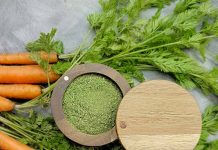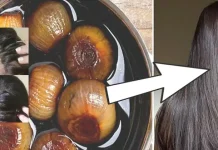From time to time, I have mentioned the benefits of using lemon juice to adjust the pH of your nutrient solution to 5.8. My friend suggested that I start using lemon juice.
It is important from a horticultural perspective, that carbon products makeup about 95% of the dry matter in plants, not the nitrogen, phosphorus, potassium and trace minerals (NPK) from the fertiliser we use to “feed” them. Although plants do a fantastic job bringing in CO2 and fixing it into the carbon products used for metabolism and growth, supplementing “premade” complex carbon can greatly improve growth. Citric acid, in particular, is a beneficial source of carbon.

What should i use lemon juice or citric acid?
Lemon juice is a natural source of citric and malic acid, sugars, and other beneficial compounds that can be used instead of citric acid.
The easiest option to use is bottled lemon juice sold by grocery stores. Freshly squeezed lemon juice will also work well.
Food grade citric acid is another option and if you do use it, think about including one part malic acid to ten parts citric acid. Lemon juice contains both citric and malic acid. Both acids are used by plants.
Throughout this document, I will refer to lemon juice and citric acid, and I will use them interchangeably.
Using lemon juice (citric acid) with your nutrient solution helps with:
The absorption of nitrate forms of nitrogen, phosphorus, calcium, and metals.
Citric acid helps support respiration demands and improves cellular energy by aiding the Kreb’s Cycle. This often manifests in the leaves by “greening them up”, i.e. better photosynthesis.
Points to note about the use of lemon juice (citric acid) to adjust the pH of your nutrient solution:
Lemon juice is a natural source of citric and malic acid. In their native environment, orchids make citric acid as well as having augmented production of it from the naturally occurring endophytic fungus in their tissues (such as Aspergillus niger).
Citric acid is an effective chelator of metals but does not interact directly with NPK fertilisers or change them except that it helps absorb these nutrients more efficiently.
It does not cause a long-term pH change to the potting media because the plants absorb and use most of the citric acid.
Plants use citric acid and other organic acids to stabilise the pH environment around the roots (rhizosphere homeostasis).
The technical detail about using lemon juice (citric acid) with orchids and other green plants.
A lot of data indicates orchids and other plants will directly exude and uptake many different organic compounds such as organic acids, hormones, and enzymes. Plants make many of these products themselves to influence their environment. However in their natural environments, many of these compounds drip onto host plants, especially if they’re associated with fungi and lichens.
Lemon juice can be used to mimic the supply of organic acids (citric and malic acid) that plants are exposed to in their natural environments. All living organisms use and/or exude citric acid for one reason or another in various metabolic processes.
One of the processes for which plants use citric acid is to maintain a stable root pH homeostasis. Plants maintain the root pH by pumping out root exudates of organic acids, primarily citric acid, to regulate the pH of the rhizosphere to approximately 5.8.
In order for the roots to be able to absorb and utilise nitrate, the most common form of nitrogen in the root environment, they have to use the nitrate reductase system. This is a protein system inside the plant that converts nitrate to ammonia, where it is used to create amino acids, which are converted into proteins and cellulose.
The nitrate reductase process, which is not specific to orchids but almost all green plants, is the mechanism whereby nitrate (NO3−) is converted to ammonia (NH3) by the removal of oxygen molecules. The process of removing the oxygen molecules leaves them with an alkali (high pH) hydroxide molecule (OH−). The hydroxide molecules need to be discharged before they reach toxic levels in the plants tissues.
To get rid of the hydroxide molecules, they need to have an acid sink at the root to “dump” them. The hydroxide flows from a high alkaline environment to a low alkaline system, this is the narrow region between the root surface and the soil or substrate (rhizosphere). To do this they pump citric acid out into the rhizosphere to lower the pH and drag the hydroxide molecules, created by the nitrate reductase system, along with it.
Whenever we start using pH buffering materials like limestone, shell grit or dolomite, etc. to raise the pH (alkalinity/bicarbonate) of the potting mix, we create an uphill climb for the plants to acquire and utilise nitrate.
If you are using a nitrate-based fertiliser, you want to have low alkalinity (pH) in both the potting mix and the nutrient solution you use to water your plants. This is where you add the lemon juice (citric acid) to set the pH of the water/nutrient solution to 5.8. By doing this, we are trying to copy what the plant attempts to do naturally. Instead of the plant having to exude citric acid to acquire calcium, phosphorus, nitrogen and chelated metals to absorb back into the plant, by adding lemon juice, we provide citric acid for the plant instead of having to use its own.
How to mix lemon juice (citric acid) with your nutrient solution:
The last thing you add to your nutrient solution is lemon juice. Add enough to set the pH to 5.8.
To measure the pH, use a pH meter or pH Indicator Test Strips. pH meters need to be calibrated regularly, at least once a month. Most pH meter manufacturers will supply the test fluids used to calibrate their equipment. Any reputable hydroponics store should be able to supply these items and show you how to use them.
Mix enough solution for one application. It is not advisable to store any leftover solution for later use.
How to use lemon juice (citric acid) nutrient solution on your plants:
When you are feeding plants, drench the pots thoroughly to the point where water flows out the bottom of the pot.
Your plant will also benefit from a foliar application of the solution, the leaves are able to absorb citric acid and some nutrients.
If you mist your plants add lemon juice to the misting water.
An award-winning New Zealand orchid grower, Jason Strong has commented that his plants look greener and seem to have more vigour since including citric acid as part of his orchid nutrient program.










